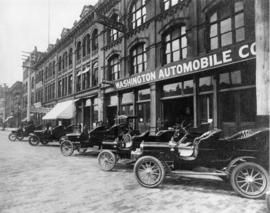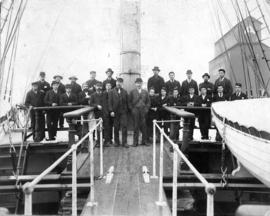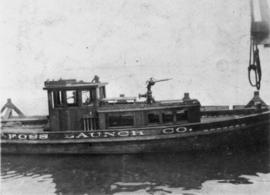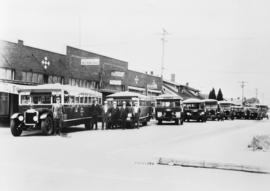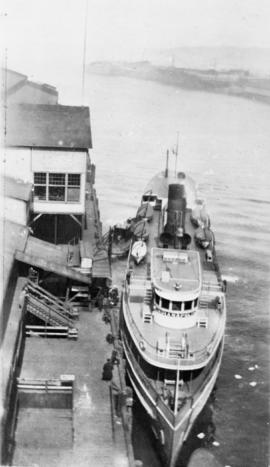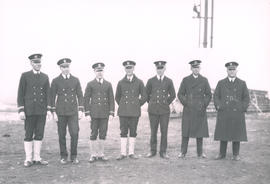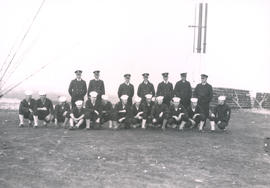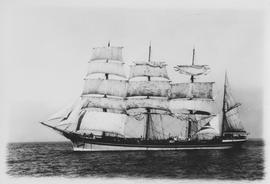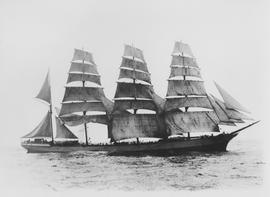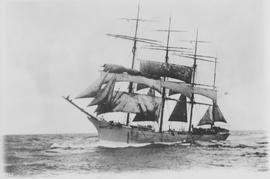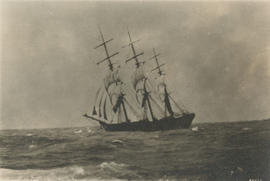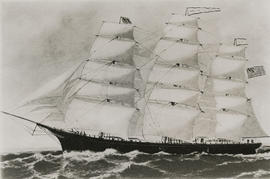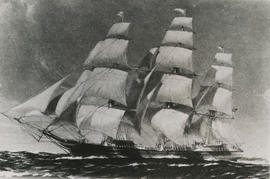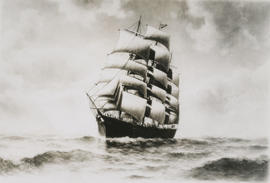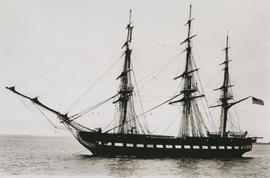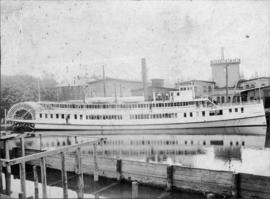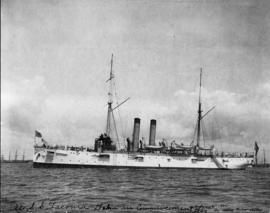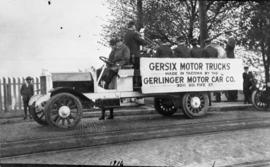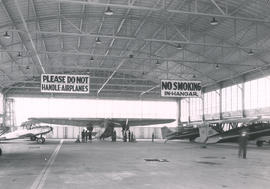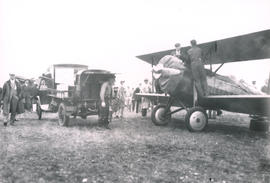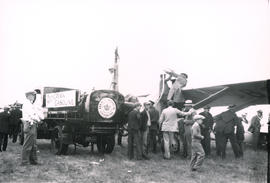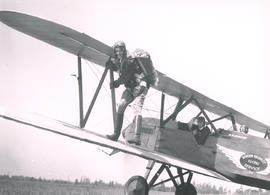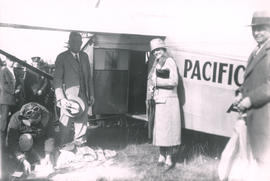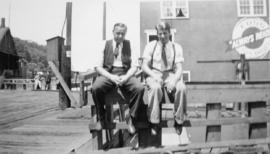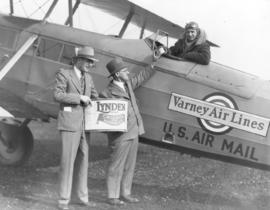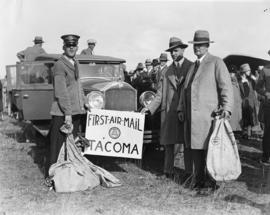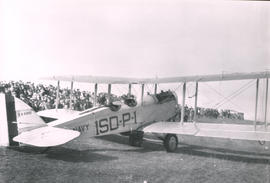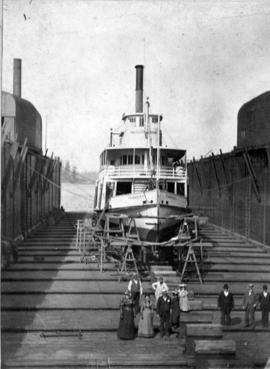Lynden's canned chicken and chicken with noodles were among the first Tacoma-made products carried in the inaugural air express service flight from Tacoma on March 1, 1930. Varney Air Lines, piloted by Al Davis, made a brief stop in his large cabin Boeing plane at Mueller-Harkins Airport, 4500 Steilacoom Blvd. S.W., before he flew on to Portland and Pasco. R.E. Darling, manager of the Washington Cooperative Association, is pictured handing a can of Lynden Brand chicken to pilot Davis; it and the larger can of chicken and noodles were destined for New York. San Tex cigars for President Hoover, Brown & Haley chocolates for the First Lady, shipments from Rhodes Bros. bound for New York, and packages to Chicago (from Wheeler-Osgood) and to Utah (from the smelter), were just some of the express cargo on the first flight from Tacoma. The cargo was transferred upon arrival in Pasco to planes heading eastward via Salt Lake City. (Tacoma Sunday Ledger, 3-2-30, p. 1) TPL-5544
Varney Air Lines; Airline industry; Airplanes--Tacoma--1930-1940; Davis, Al; Darling, R.E.; Canned foods;
